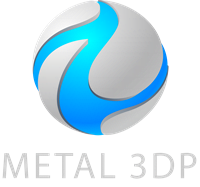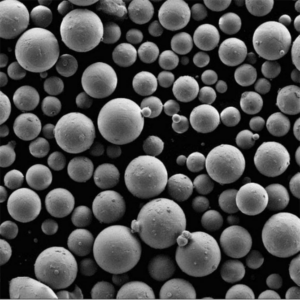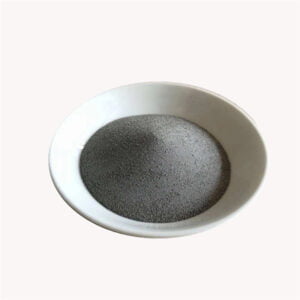Blog
all colletions
Spherical Titanium-Based Alloy Brazing Powder: Building Stronger and Lighter Connections
When it comes to brazing applications that demand lightweight yet durable joints, spherical titanium-based alloy brazing powder is a top contender. Known for its exceptional strength-to-weight ratio, corrosion resistance, and high-temperature performance, titanium alloys have become critical in industries like aerospace, medical devices, automotive, and energy systems. But what sets
Tungsten Carbide/Cobalt/Chromium/Nickel Powder: Pioneering Material for Wear-Resistant Applications
If you’re looking for a material that can endure the harshest environments, resist wear, and maintain its integrity under high stress, you’ve just found it—Tungsten Carbide/Cobalt/Chromium/Nickel Powder. This advanced composite material combines the exceptional hardness of tungsten carbide with the flexibility and corrosion resistance of cobalt, chromium, and nickel. The
Atomized Spherical Mg-Gd-Zn Alloy Powder: The Key to Lighter, Stronger Designs
Let’s talk about Atomized Spherical Mg-Gd-Zn Alloy Powder—a material that’s rewriting the rules of lightweight engineering. This magnesium-based alloy combines the strength-enhancing properties of gadolinium (Gd) and the corrosion-resistant characteristics of zinc (Zn) to deliver a powder that is lightweight, durable, and highly versatile. Its spherical powder form is a
CuNiSiCr Spherical Copper Alloy Powder: The Future of Metal Additive Manufacturing
In the ever-evolving world of advanced manufacturing, CuNiSiCr Spherical Copper Alloy Powder is gaining significant attention. This unique alloy, combining copper, nickel, silicon, and chromium, is celebrated for its exceptional mechanical properties, thermal conductivity, and corrosion resistance. Whether you’re involved in additive manufacturing, powder metallurgy, or thermal spraying, this versatile
Discover the Strength of C103 Niobium Hafnium Alloy Spherical Powder
In the world of advanced materials, few alloys stand out as much as C103 Niobium Hafnium Alloy Spherical Powder. This remarkable material is widely used in high-performance aerospace, nuclear, and industrial applications due to its outstanding high-temperature stability, corrosion resistance, and mechanical strength. But what exactly makes this alloy so
Top Applications of Brass Alloy CuZn Nanometer Spherical Powder for Modern Engineering
In the ever-evolving world of materials science, few innovations have garnered as much attention as nanometer spherical powders. Among these, Brass Alloy CuZn Nanometer Spherical Powder stands out for its unique combination of properties, versatility, and wide-ranging applications. Whether you’re working in electronics, aerospace, or additive manufacturing, this material offers
Spherical Titanium-Based Alloy Brazing Powder: Building Stronger and Lighter Connections
When it comes to brazing applications that demand lightweight yet durable joints, spherical titanium-based alloy brazing powder is a top contender. Known for its exceptional strength-to-weight ratio, corrosion resistance, and high-temperature performance, titanium alloys have become critical in industries like aerospace, medical devices, automotive, and energy systems. But what sets the spherical powder apart? It’s all in the flowability and precision.
The spherical shape of the brazing powder ensures smooth and controlled application, filling gaps and crevices evenly for strong, reliable joints. Coupled with titanium’s inherent properties, this material is ideal for joining high-performance components in demanding environments. Whether you’re engineering turbine blades or assembling surgical instruments, spherical titanium-based alloy brazing powder offers the perfect solution.
In this guide, we’ll cover composition, properties, applications, specifications, suppliers, and pricing, as well as explore the advantages and limitations of spherical titanium-based brazing powders. By the end, you’ll have all the insights you need to decide whether this material is the right fit for your next project.
Tungsten Carbide/Cobalt/Chromium/Nickel Powder: Pioneering Material for Wear-Resistant Applications
If you’re looking for a material that can endure the harshest environments, resist wear, and maintain its integrity under high stress, you’ve just found it—Tungsten Carbide/Cobalt/Chromium/Nickel Powder. This advanced composite material combines the exceptional hardness of tungsten carbide with the flexibility and corrosion resistance of cobalt, chromium, and nickel. The result? A powder that’s perfect for high-performance industrial applications like thermal spraying, hardfacing, and additive manufacturing.
Why is this blend so special? Imagine tungsten carbide as the armor, cobalt as the glue that holds it together, chromium as the shield against corrosion, and nickel as the stabilizer. Together, they create a material that doesn’t just survive in extreme conditions—it thrives. From oil rigs to jet engines, this powder is making its mark on industries that demand nothing but the best.
In this guide, we’ll dive deep into the types, composition, properties, and applications of Tungsten Carbide/Cobalt/Chromium/Nickel Powder. We’ll also explore its pricing, suppliers, and why it’s becoming the go-to material for cutting-edge technologies
Atomized Spherical Mg-Gd-Zn Alloy Powder: The Key to Lighter, Stronger Designs
Let’s talk about Atomized Spherical Mg-Gd-Zn Alloy Powder—a material that’s rewriting the rules of lightweight engineering. This magnesium-based alloy combines the strength-enhancing properties of gadolinium (Gd) and the corrosion-resistant characteristics of zinc (Zn) to deliver a powder that is lightweight, durable, and highly versatile. Its spherical powder form is a game-changer for industries like aerospace, automotive, and additive manufacturing, where precision and high performance are non-negotiable.
So, what makes this alloy powder so special? Imagine a material that is as light as a feather but as strong as steel. Add to that its ability to resist corrosion, tolerate high temperatures, and flow effortlessly in manufacturing processes, and you’ve got a material that’s ready to tackle the toughest engineering challenges. Whether you’re printing complex 3D parts, reinforcing automotive components, or designing lightweight aerospace structures, Atomized Spherical Mg-Gd-Zn Alloy Powder offers the perfect combination of strength, flexibility, and reliability.
In this comprehensive guide, we’ll dive into every aspect of this remarkable material. From its composition and properties to its real-world applications, specifications, and pricing, we’ve got you covered. By the end, you’ll see why Atomized Spherical Mg-Gd-Zn Alloy Powder isn’t just a material—it’s a solution to modern engineering problems.
CuNiSiCr Spherical Copper Alloy Powder: The Future of Metal Additive Manufacturing
In the ever-evolving world of advanced manufacturing, CuNiSiCr Spherical Copper Alloy Powder is gaining significant attention. This unique alloy, combining copper, nickel, silicon, and chromium, is celebrated for its exceptional mechanical properties, thermal conductivity, and corrosion resistance. Whether you’re involved in additive manufacturing, powder metallurgy, or thermal spraying, this versatile material is likely something you’ve encountered or are considering for your processes.
This comprehensive guide will cover everything you need to know about CuNiSiCr Spherical Copper Alloy Powder—from its key composition and properties to its applications, pricing, and advantages. We’ll also dive into the technical details such as specifications, comparison with other materials, and frequently asked questions.
So, without further ado, let’s explore the fascinating world of CuNiSiCr Spherical Copper Alloy Powder and why it might be the perfect solution for your next project.
Discover the Strength of C103 Niobium Hafnium Alloy Spherical Powder
In the world of advanced materials, few alloys stand out as much as C103 Niobium Hafnium Alloy Spherical Powder. This remarkable material is widely used in high-performance aerospace, nuclear, and industrial applications due to its outstanding high-temperature stability, corrosion resistance, and mechanical strength. But what exactly makes this alloy so special? Why is it in such high demand, and what applications benefit from its use?
This guide will dive deep into everything you need to know about C103 Niobium Hafnium Alloy Spherical Powder. We’ll cover its properties, composition, applications, specifications, and even pricing. Whether you’re an engineer, manufacturer, or just curious about advanced materials, this guide has you covered.
Top Applications of Brass Alloy CuZn Nanometer Spherical Powder for Modern Engineering
In the ever-evolving world of materials science, few innovations have garnered as much attention as nanometer spherical powders. Among these, Brass Alloy CuZn Nanometer Spherical Powder stands out for its unique combination of properties, versatility, and wide-ranging applications. Whether you’re working in electronics, aerospace, or additive manufacturing, this material offers a host of benefits, from high electrical conductivity to excellent corrosion resistance.
In this article, we’ll explore everything there is to know about Brass Alloy CuZn Nanometer Spherical Powder, from its composition and key properties to its applications and pricing. We’ll also cover the specifications, suppliers, and advantages vs. limitations, helping you make an informed decision about whether this material is right for your needs.
Our Product
HOT SALE PRODUCT
CONTACT US
Any questions? Send us message now! We’ll serve your request with a whole team after receiving your message.

Metal Powders for 3D Printing and Additive Manufacturing
COMPANY
PRODUCT
cONTACT INFO
- Qingdao City, Shandong, China
- [email protected]
- [email protected]
- +86 19116340731







